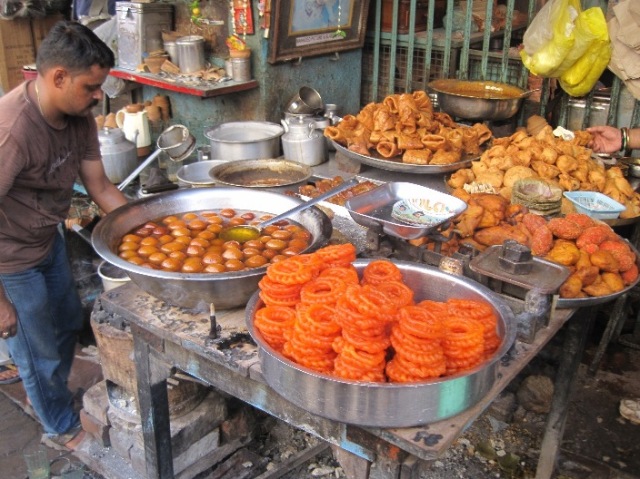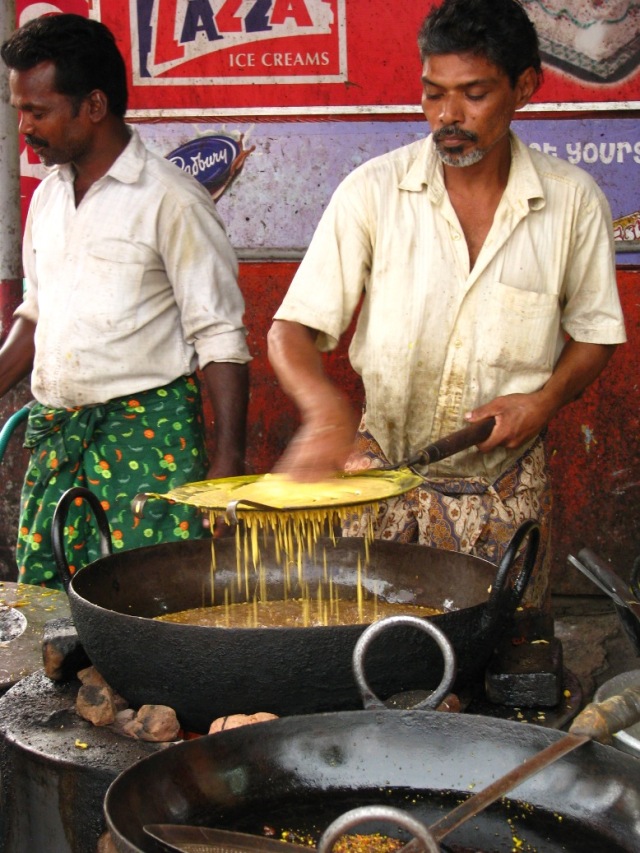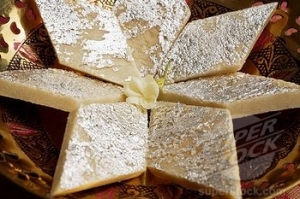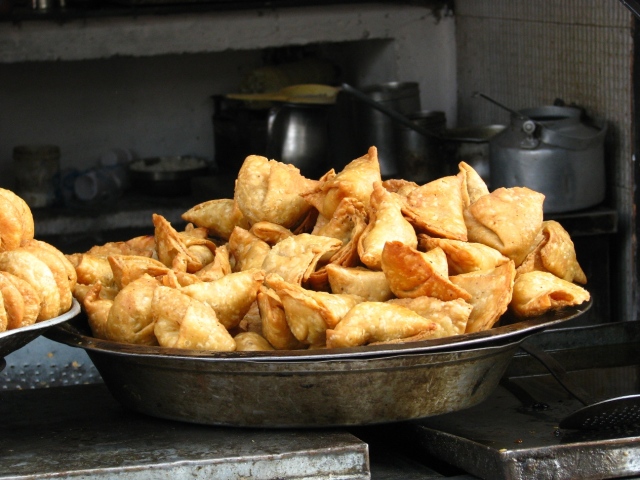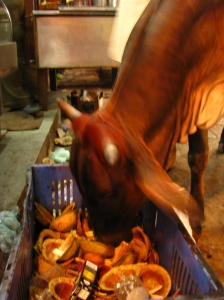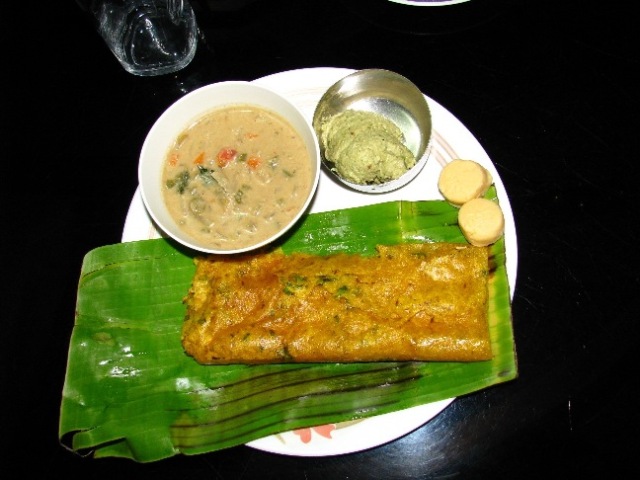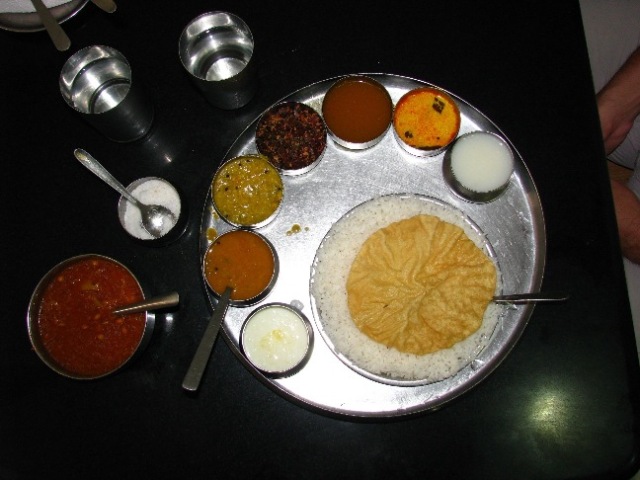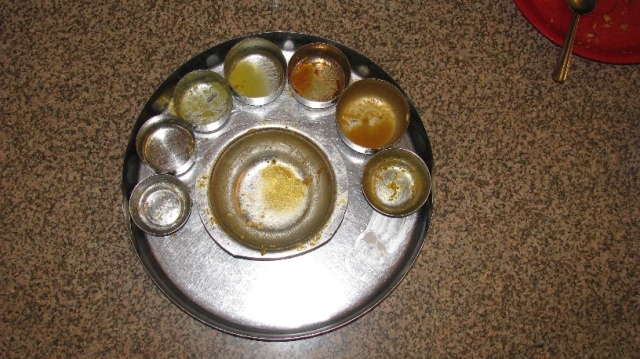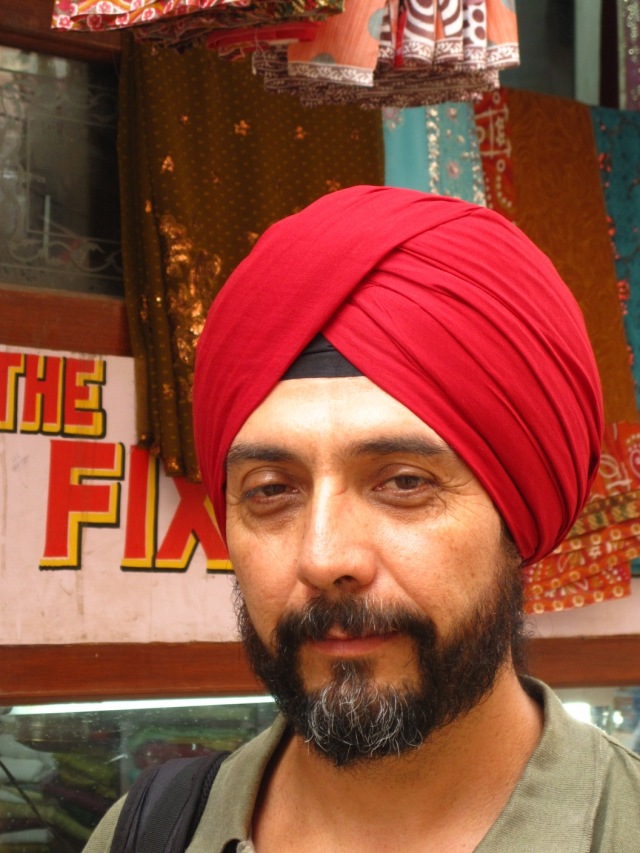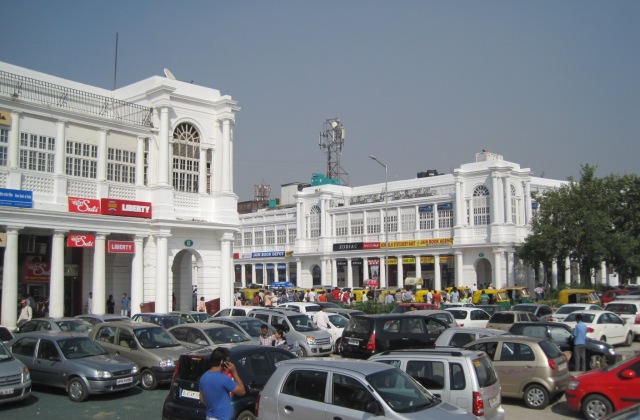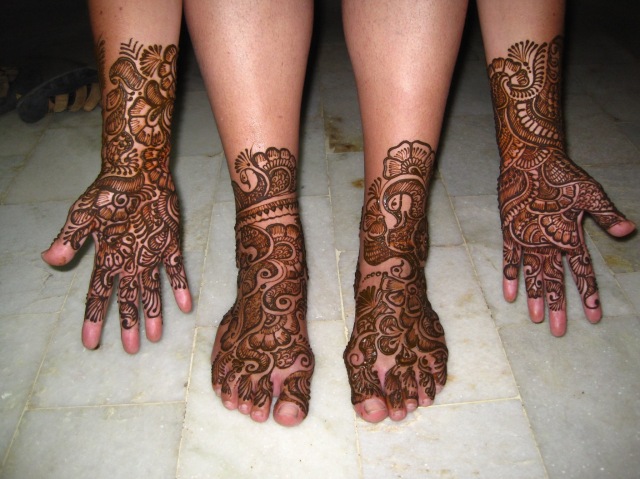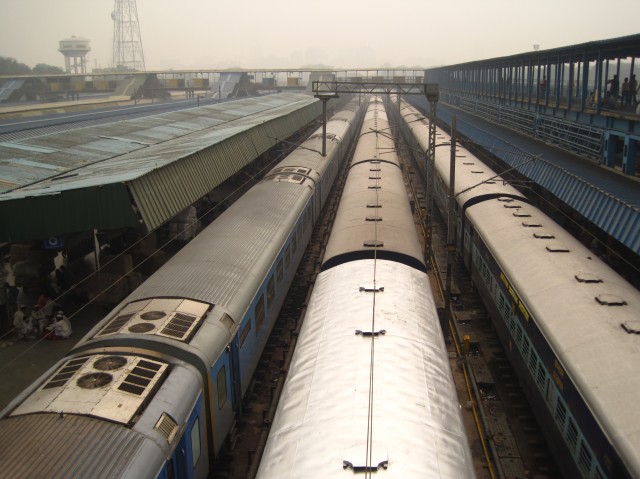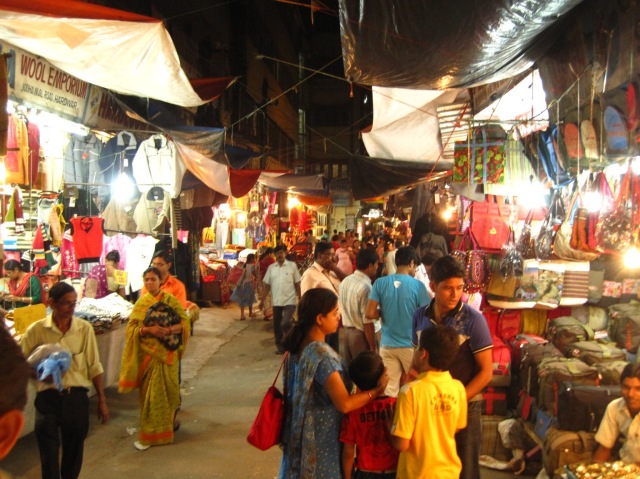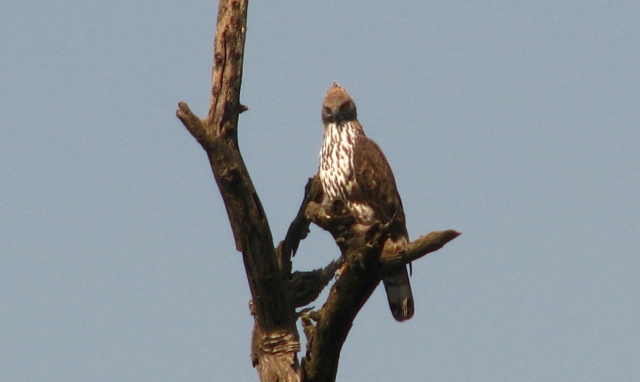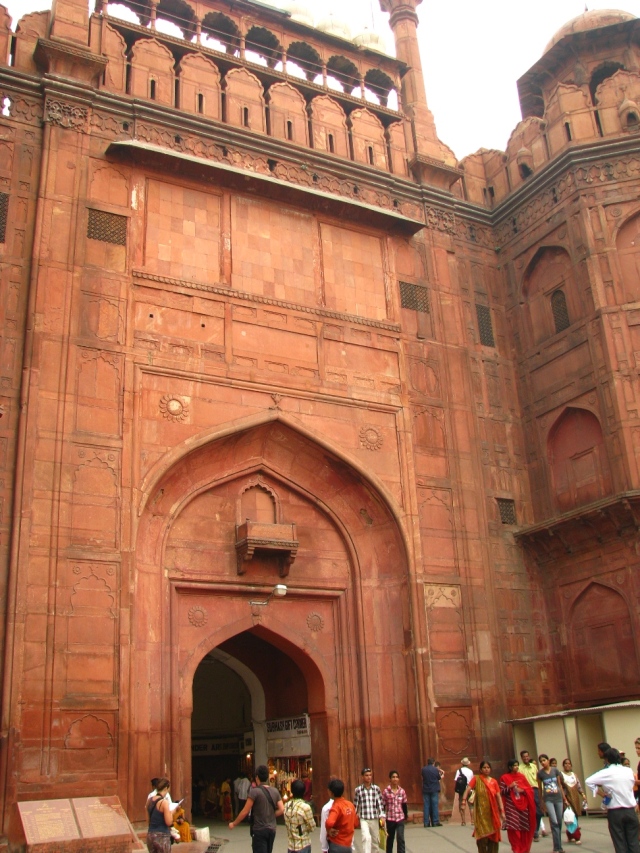
Lahore Gate
Friday October 22, 2010
New Delhi, National Capital Territory
This slideshow requires JavaScript.
We started the morning with a visit to the tailor to agree on the final details of the order. Monti is the manager of the shop and a Sikh. He dressed Ignacio with a Sikh turban made with a cloth of 4.5 meters long. He looked really authentic!
We started our tour of Delhi with a plan to visit the Red Fort. We flagged a rickshaw to take us there, but the our driver got desperately lost. He did not know what the Red Fort was, and took us the Old Delhi Train station. We dismissed him and got on a second rickshaw that got as lost as the first one. We passed Chandi Chowk, the comercial avenue near the Red Fort and decided to get off the rickshaw there.
We walked the extension of the avenue, lined with shops from electronics to jewelry and religious artifacts. On the way we passed the large Sisganj Gurdwara. Around it there were many places to eat and we found an honest restaurant serving South Indian Thalis and dosas for our lunch, and finally reached the entrance of the Fort.
As we enter the Red Fort, the first impression comes from the bazaar: there were souvenir shops along a short covered street. This market had been build for the use of the women inhabiting the fort, allowing them to shop without needing to leave the complex, as they lived in Purdah (segregation).
There was restauration work going on around the complex, probably unfinished from the preparations for the Commonwealth Games.
While we were visiting the buildings a great storm fell upon us. We took refuge together with other visitors inside the marble pavillions even thought they were cordoned out so people would not enter. The security guard tried to keep people ouside but the storm was very strong. One sikh man had a word with the guard, and eventually everyone entered anyway. A very difficult situation.
The sky turned deep purple and strong winds swept the gardens of the fort, carrying rain water deep into our pavillion. We huddled behind the decorated marble columns. Eventually the storm stopped and the sky cleared slightly. Just before the storm we had noticed that the air was thick with dust – it turned the sky orange, and showed up in flash photographs. What impressed us the most was the clearness of the air after the storm. The storm had taken all the dust from the air away. We also saw several small trees on the garden below that had bent down by the strenght of the wind. The paths on the fort where now underwater and we had to walk in anckle deep water to visit the other buildings.
It was dark when we left the Red Fort. Close by we encountered a parade of musicians, people carrying lights and floats. We believe it was in preparation of Diwali or the “festival of lights”, celebrating the return home of Lord Rama together with his wife Sita and Brother Laxshman after defeating the king demon Ravaan, desribed in the epic Ramayana.
Each float had a different episode of the epic and had as escort a band of musicians, porters carrying lights,and of course behind all a small wallah pushing a generator to provide electricity for the group.
There were many groups and we finally gave up following them and tried to find another path to return to our hotel. We ended up at the Jama Masjid, a very impressive mosque, and she was looking beautiful under the full moon. The bazaar around the masjid was very busy and we could smell the kebabs being prepared on the street stalls. We should have eaten some, but we were so tired we just kept going.
We wandered around the market and eventually we met again the parade. We felt the mix of religions, moving from the muslin bazaar to the hindu celebration, all in question of minutes. We stumbled upon a subway station opted to enter into the Delhi Metro system, and where almost instanty transported back to Paharganj and our hotel.

Rama, Sita & Arjuna
Sexta, 22 de Outubro de 2010
Nova Delhi, Território da Capital Nacional
Começamos a manhã com uma visita ao alfaiate para acertar os últimos detalhes das roupas. Monti é o gerente da loja e um Sikh. Ele vestiu o Ignacio com um turbante Sikh de 4.5 metros. Ficou tão autentico que ele podia se passar por Sikh se quisesse!
Planejamos começar nossa visita a Delhi pelo Forte Vermelho. Paramos um rickshaw para nos levar, mas o motorista ficou desesperadamente perdido. Nem sabia o que era Red Fort, e nos deixou na estação de trem de Velha Delhi. O dispensamos e pegamos outro rickshaw que ficou tão perdido quanto o primeiro. Quando passamos por Chandi Chowk, a avenida comercial perto do Forte Vermelho descemos do rickshaw. Caminhamos ao longo da avenida, cheia de lojas de eletrônicos, jóias e artefatos religiosos. Passamos pela grande Sisganj Gurdwara. Em volta dela haviam muitos lugares para comer e nos achamos um restaurante honesto servindo thalis do sul da India e dosas para nosso almoço.
Ao entrar no Forte, a primeira impressão foi o bazaar: uma curta rua coberta ladeada por lojas de souvenir. Este mercado foi construido para o uso das mulheres que moravam no forte, assim elas não precisavam sair do complexo para fazer suas compras, já que viviam em Purdah (segregação).
Ainda haviam trabalhos de restauração inacabados no complexo, provavelmente das preparações para os Jogos do Comonwealth.
Enquanto visitavamos o templo fomos atingidos por uma grande tempestade. Nos refugiamos junto com outros visitantes dentro dos pavilhões de mármore, apesar de que eles tinham barreiras para que ninguém entrasse. O guarda tentou impedir nossa entrada, mas a tempestade estava muito forte. Um sikh conversou com ele e eventualmente todo mundo pode se refugiar. Uma situação bem difícil.
O céu ficou escuro e fortes ventos varriam os jardins do forte. Eventualmente a tempestade parou e o céu clareou. Antes da tempestade tínhamos reparado que o ar estava carregado de poeira: o céu estava laranja e a poeira aparecia nas fotos com flash. Ficamos impressionados com a limpeza do ar depois da tempestade. Ela tinha lipou toda a poeira do ar. Também vimos várias árvores pequenas que foram tombadas pelo vento. As calçadas do forte ficaram alagados e tivemos que caminhar com água pelos tornozelos para ir visitar os outros edifícios.
Já estava escuro quando saimos do Forte Vermelho. Por perto encontramos com uma parada com músicos, pessoas carregando luminárias e carros alegóricos. Achamos que a parada era em preparação ao Diwali ou “festival das luzes”, celebrando o retorno de Rama junto com sua esposa Sita e o irmão Laxshman depois de derrotarem o demônio-rei Ravaan, descrito no épico Ramayana. Cada carro representava episódios diferentes do épico e era acompanhado por uma banda de músicos, carregadores das luminárias, e é claro, atras de todos um wallah empurrando um gerador para dar eletricidade para o grupo.
Haviam muitos grupos e eventualmente desistimos de segui-los e tentamos achar outro caminho para voltar ao hotel. Acabamos chegando na Jama Masjid, uma mesquita impressionante que estava muito linda sob a luz da lua. O bazaar em volta da masjid estava bem agitado e podiamos sentir o cheiro dos kebabs sendo preparados pelos ambulantes. Deviamos ter aproveitado a chance de prová-los, mas estávamos tão cansados que decidimos continuar.
Atravessamos o mercado e eventualmente encontramos novamente com a parada. Sentimos a mistura de religiões, saindo do bazaar muçulmano e caindo na celebração hindu, tudo em matéria de minutos. Encontramos uma estação de Metro e decidimos voltar por ele. saimos quase instantâneamente de volta em Paharganj e nosso hotel.

